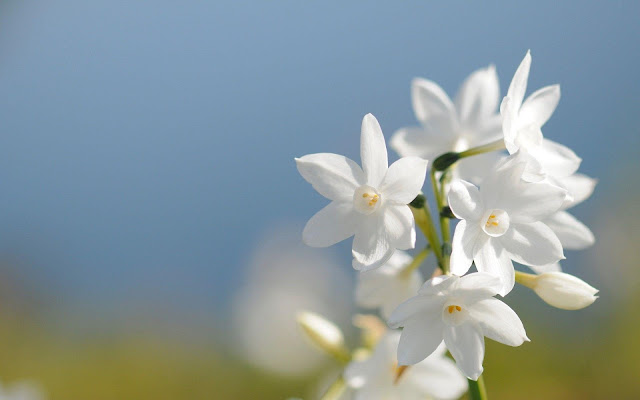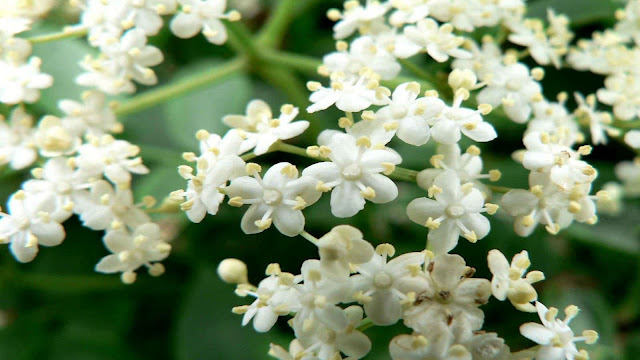Mondokaki - Tabernaemontana divaricata - Crepe Jasmine - Chandni Tree Amazing Facts 08/11/2018
Mondokaki - Tabernaemontana Divaricata - Crepe Jasmine - Chandni Tree Amazing Fact 08/11/2018
Halo ... hey ... ola ... meet me again in this simple blog and vlog, and anyway very thanks for visiting, and today i want to share about Jasmine, i hope all of you like it to read this simple article and share it ;)
- Jasmine is a genus of shrubs and vines in the olive family.
- There about 200 different species of Jasmine.
- Jasmine is a native to tropical and warm temperate regions of Eurasia, Australasia and Oceania.
- Jasmines are widely cultivated for the characteristic fragrance of their flowers.
- Jasmine grow well in moist, well drained, sandy loam to clayey garden soil with moderate level of fertility. It prefer a full sun to partial shade and a warm site.
- Jasmine can live 15 to 20 years in the wild.
 |
| Mondokaki - Tabernaemontana divaricata - Crepe Jasmine - Chandni Tree Amazing Facts |
- Jasmine shrubs reach a height of 3 to 4.5 meters (10 to 15 feet). Jasmine vines can reach up to 9 meters (30 feet) in height by attaching to the nearby structures.
- It can be either deciduous (leaves falling in autumn) or evergreen (green all year round), and can be erect, spreading, or climbing shrubs and vines.
- Jasmine develop green, smooth stem that is slender and nearly square-shaped on the cross section.
- Jasmine's leaves are borne, opposite or alternat. They can be simple, trifoliate, or pinnate with 5-9 leaflets, each up to 6.5 centimeters (2.5 inches) long.
- The flowers are typically 2.5 centimeters (1 inch) in diameter. They are usually white or sometimes yellow in color, although in rare instances they can be slightly reddish.
- Flowers are usually gathered in clusters with a minimum of three flowers. Also they can be solitary on the ends of branchlets in some types of jasmine.
- Flowering in Crepe Jasmines take place in summer or spring.
- Typically, each flower will have about four to nine petals, two locules, and one to four ovules, with two stamens and very short filaments.
- Jasmine flowers contain both types of reproductive organs. Since stamens and pistil don't develop at the same time, flowers can't perform self-pollination. Butterflies and bees are main pollinators of Crape jasmine.
 |
| Mondokaki - Tabernaemontana divaricata - Crepe Jasmine - Chandni Tree Amazing Facts |
- The Jasmine flower releases it's fragrance at night after the sun has set and especially when the moon is waxing towards fullness.
- The fruits of jasmines are berries that turn black when ripe.
- The Jasmine is believed to have originated in The Himalayas in western China.
- Jasmine is known in India as the "Queen of the Night" because of it's intoxicating perfume that is released at night.
- As a cut flower, it fills the home with a relaxing scent perfect for drifting off to sleep. Some gardeners prefer to plant jasmine outside the bedroom window to allow its fragrance to drift in on the night air.
- A number of unrelated plants contain the word "Jasmine" in the common names.
- In China, Jasmine is used a symbol of feminine sweetness and beauty. Jasmine also symbolize deep affection, happiness and elegance, When used in religious ceremonies jasmine represents purity.
 |
| Mondokaki - Tabernaemontana divaricata - Crepe Jasmine - Chandni Tree Amazing Facts |
- Jasmine flowers are worn by women in their hair in southern and southeast Asia.
- Jasmine tea is tea scented with aroma from jasmine blossoms to make a scented tea. Typically, jasmine tea has green tea as the tea base; however, white tea and black tea also used. The resulting flavour of jasmine tea is subtly sweet and highly fragrant. It is the most famous scented tea in China.
- In Chinese medicine Jasmine flowers are known to "cool" the blood and have a strong antibacterial, antiviral, and anti-tumor properties. Because they cool the blood they help with reducing a fever and cooling an overheated person (from the sun).
- Jasmine oil, a type of essential oil derived from the jasmine flower, is a popular natural remedy for improving mood, overcoming stress and balancing hormones.
- Jasmine oill is used in high-grade perfumes and cosmetics such as creams, oils, soaps, and shampoos.
 |
| Mondokaki - Tabernaemontana divaricata - Crepe Jasmine - Chandni Tree Amazing Facts |
- The Jasmine oil contains benzyl acetate, terpinol, jasmone, benzyl benzoate, linalool, several alcohols, and other compounds.
- Syrup made jasmine flowers is used as flavoring agent in the food industry.
- Several countries and states consider jasmines as a national symbol. They are : Hawaii, Indonesia, Pakistan and Philippines.
- In Thailand, jasmine is the symbol for mother and portrays love and respect.
- Jasmine is a feminine given name.
Traditional Medicine
They are used in Ayuverdic medicine and the national medicine of South East Asia, the Malay, Peninsula, Indonesia and Ambon Island.
 |
| Mondokaki - Tabernaemontana divaricata - Crepe Jasmine - Chandni Tree Amazing Facts |
Chemical Constituents
Plant has been reported to contain a variety of alkaloids, including, in the bark of the stem and root including tabemaemontanine, coronarine, coronaridine and dregamine. Alkaloids are present in all the vegetative parts of this shrub.
ok ... that's all can i share about the beauty of Jasmine, hope a lot see you in next article, thanks a lot for visiting, best regards :)
Comments
Post a Comment